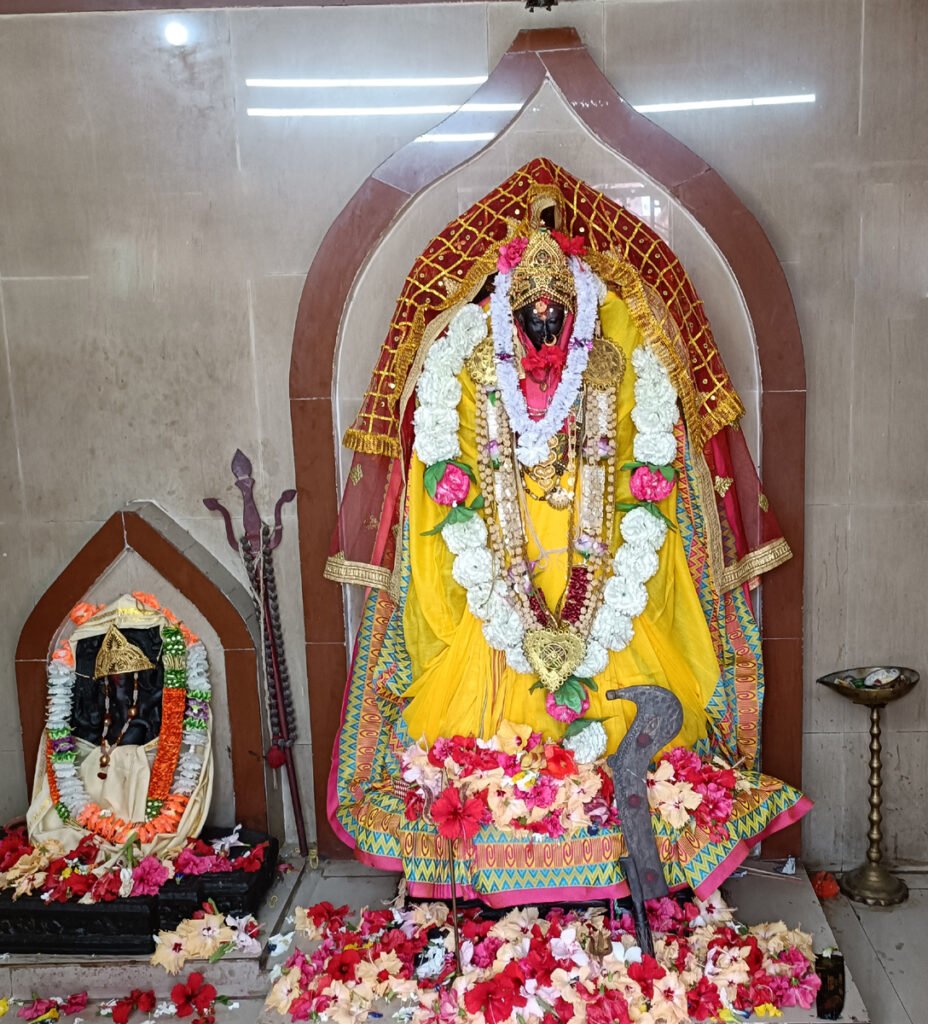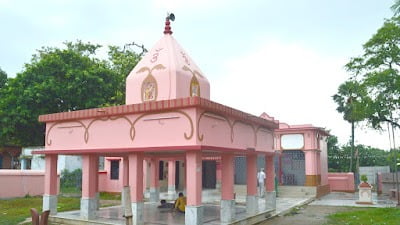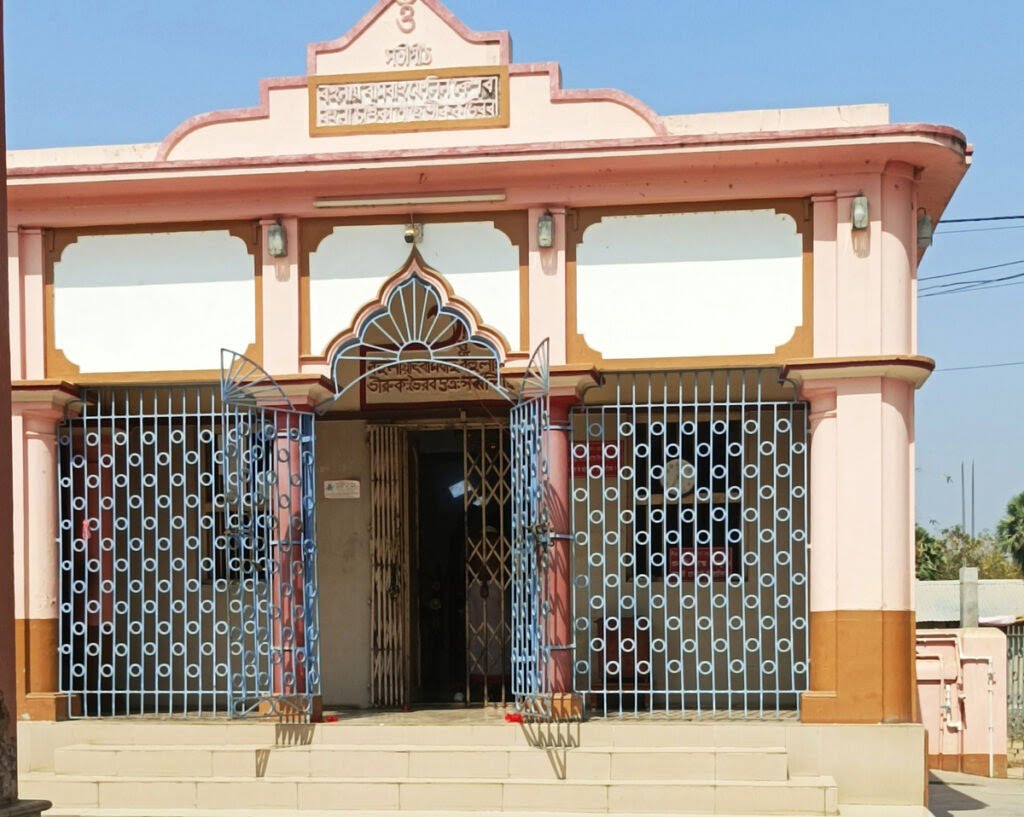Bahula Temple | Bahula Shakti Peeth
Bahula Temple is a significant Hindu pilgrimage site located in West Bengal, India. It is believed to be one of the 51 Shakti Peethas, which are sacred places associated with the Goddess Shakti or Devi. The exact location of Bahula Shakti Peeth is in the Bardhaman district of West Bengal.

It is believed that the left arm of Sati fell. The presiding deity of the temple is Devi Bahula, who is worshipped as an incarnation of Goddess Durga or Shakti. The temple attracts devotees and pilgrims throughout the year, especially during festivals like Navratri, Durga Puja, and Kali Puja.
The temple complex consists of the main shrine dedicated to Devi Bahula, along with smaller temples and structures. Devotees offer prayers, perform rituals, and seek blessings from the goddess. The temple is an important center for Shakti worship and holds cultural and religious significance for the people of West Bengal and the devotees of Goddess Durga.
Contents
- 1 History of Bahula Shakti Peeth Temple:
- 2 Significance of Bahula Temple:
- 3 FAQ:
- 3.0.1 What is Bahula Shaktipeeth?
- 3.0.2 What is the significance of Bahula Shaktipeeth?
- 3.0.3 How can I reach Bahula Shaktipeeth?
- 3.0.4 What rituals are performed at Bahula Shaktipeeth?
- 3.0.5 When is the best time to visit Bahula Shaktipeeth?
- 3.0.6 Is there any accommodation available near Bahula Shaktipeeth?
- 3.0.7 Are there any specific rules or dress code for visitors?
- 3.0.8 Can non-Hindus visit Bahula Shaktipeeth?
- 3.0.9 What are some nearby attractions to visit in the vicinity of Bahula Shaktipeeth?
- 3.0.10 Is photography allowed at Bahula Shaktipeeth?
- 3.1 How to reach Bahula Shakti Peeth:
- 4 Google Maps:
History of Bahula Shakti Peeth Temple:
The history of Bahula Shakti Peeth dates back to ancient times and is associated with Hindu mythology. According to the legend, it is believed that the left arm of Goddess Sati fell at this location, thus making it one of the revered Shakti Peethas.
The story behind this Shakti Peeth is linked to the grand yajna organized by Sati’s father, Daksha. Sati, who was married to Lord Shiva, felt deeply hurt and insulted when her father did not invite her husband to the yajna. Unable to bear the humiliation, Sati immolated herself in the fire of the yajna.
When Lord Shiva learned about Sati’s self-immolation, he was filled with grief and anger. He carried Sati’s lifeless body and started performing the Tandava, a furious dance of destruction. To calm him down and prevent further devastation, Lord Vishnu used his Sudarshana Chakra to cut Sati’s body into pieces.
It is said that Sati’s left arm fell at the present-day location of Bahula temple in West Bengal. Over time, a temple was established at the site to worship Devi Bahula, an incarnation of Goddess Durga or Shakti. The temple became a sacred place for devotees to offer prayers and seek blessings.
Throughout history, the Bahula temple has undergone renovations and reconstructions. Kings, rulers, and devotees have contributed to the maintenance and development of the temple complex. The local population has revered the temple for generations, and it continues to be an important pilgrimage site in West Bengal.
Today, the temple attracts devotees and tourists from different parts of India and beyond. It is particularly popular during festivals like Navratri, Durga Puja, and Kali Puja when devotees flock to the temple to participate in religious ceremonies and seek the blessings of Devi Bahula. The historical and religious significance of Bahula Shakti Peeth has made it an integral part of the cultural fabric of West Bengal.
Read More>> Jwalamukhi Temple Shaktinagar

Significance of Bahula Temple:
Goddess Shakti’s Power: As one of the 51 Shakti Peethas, Bahula temple is considered a seat of immense divine power, associated with the feminine energy or Shakti. Devotees believe that worshipping at this sacred site can grant them blessings, protection, and fulfillment of their desires.
Connection to Goddess Durga: This Shakti Peeth is dedicated to Devi Bahula, who is regarded as an incarnation of Goddess Durga. Goddess Durga is a central figure in Hindu mythology, representing the fierce and protective aspect of the divine feminine. Her worship is believed to bestow courage, strength, and victory over obstacles.
Historical and Cultural Importance: The temple has a long history, and its existence is associated with ancient traditions and customs. Over the years, it has become an integral part of the cultural heritage of West Bengal and holds significant religious importance for the local population and devotees from far and wide.
Pilgrimage Destination: It is a popular pilgrimage destination, attracting devotees and tourists throughout the year, especially during festivals like Navratri, Durga Puja, and Kali Puja. Pilgrims visit the temple to offer prayers, perform rituals, and seek spiritual solace and blessings from the goddess.
Mythological Legend: The legend of Bahula Shakti Peeth is deeply intertwined with the story of Goddess Sati’s sacrifice and Lord Shiva’s cosmic dance of destruction. This mythological tale adds to the mystique and significance of the temple, drawing devotees who seek to connect with the divine through the age-old narrative.
Cultural Festivals: The temple plays a significant role in celebrating various Hindu festivals, especially Navratri when the nine forms of Goddess Durga are worshipped with great fervor. The festivities attract a large number of devotees, adding to the vibrant cultural heritage of the region.
Spiritual Retreat: Many people visit Bahula Shakti Peeth seeking spiritual rejuvenation and seeking answers to life’s questions. The peaceful ambiance of the temple and its surroundings provide a perfect setting for meditation and introspection.
Read More>> Tripura Sundari Temple in Tripura
Some of the miracles that are said to have happened at the Bahula Shakti Peeth include:
- A woman who was unable to conceive was granted a child after praying to the goddess.
- A man who was blind in one eye regained his sight after bathing in the holy water of the temple tank.
- A young boy who was suffering from a terminal illness was cured after his family prayed to the goddess.
- A businessman who was on the verge of bankruptcy was able to turn his business around after making a donation to the temple.
- A couple who had been trying to conceive for many years was finally able to have a baby after visiting the temple.
Read More>> Hinglaj Mata Temple Balochistan

FAQ:
What is Bahula Shaktipeeth?
Bahula Shaktipeeth is a sacred Hindu pilgrimage site located in Ketugram, West Bengal, India. It is known for its association with the goddess Sati and Lord Shiva.
What is the significance of Bahula Shaktipeeth?
Bahula Shaktipeeth is considered a place of immense spiritual significance for Hindus. It is believed to be the site where the left arm of Goddess Sati fell when her corpse was dismembered by Lord Vishnu’s Sudarshana Chakra.
How can I reach Bahula Shaktipeeth?
To reach Bahula Shaktipeeth, you can travel to Ketugram in West Bengal, which is the nearest town. From there, the temple is easily accessible by road. The exact travel details may vary depending on your starting location.
What rituals are performed at Bahula Shaktipeeth?
Devotees visit Bahula Shaktipeeth to offer prayers, perform abhishekam (ritual bathing of the deity), and make offerings to the goddess. It’s a place for worship and seeking blessings from the divine.
When is the best time to visit Bahula Shaktipeeth?
The temple can be visited throughout the year, but it’s especially popular during festivals like Navratri and Diwali. However, it’s recommended to check local calendars and schedules for specific events and festivities.
Is there any accommodation available near Bahula Shaktipeeth?
Ketugram and the surrounding areas have various options for accommodation, including hotels and guesthouses. It’s advisable to book your stay in advance, especially during peak pilgrimage seasons.
Are there any specific rules or dress code for visitors?
While there might not be strict dress codes, it is customary to dress modestly and respectfully when visiting a religious site. It’s also a good practice to remove your shoes before entering the temple premises.
Can non-Hindus visit Bahula Shaktipeeth?
The temple is open to people of all faiths and backgrounds. Visitors are expected to show respect for the religious traditions and customs observed at the site.
What are some nearby attractions to visit in the vicinity of Bahula Shaktipeeth?
In addition to the temple, you can explore the local culture, visit other nearby temples, and enjoy the natural beauty of the region. It’s a chance to immerse yourself in the rich heritage of West Bengal.
Is photography allowed at Bahula Shaktipeeth?
Photography rules may vary, but it’s generally allowed in the outer areas of the temple. However, it’s best to ask for permission or check with the temple authorities for specific guidelines.
Read More>> Shri Jogadya Shaktipeeth, Kshirgram, West Bengal
How to reach Bahula Shakti Peeth:
By Air:
The nearest airport to Bahula Shakti Peeth is Netaji Subhash Chandra Bose International Airport in Kolkata, which is well-connected to major cities in India and several international destinations. From the airport, you can hire a taxi or take public transportation.
By Train:
The nearest railway station to our temple is Bardhaman Junction (also known as Burdwan Junction), which is well-connected to major cities in India. From Bardhaman Junction, you can hire a taxi or take a local bus to reach the temple. It is approximately a 30-minute drive from the railway station.
By Road:
From Kolkata: Bahula Shakti Peeth is approximately 105 kilometers away from Kolkata. You can take NH19 or AH1 (previously known as NH2) and drive towards Bardhaman. From Bardhaman, you can take the Bardhaman-Katwa Road.
From other parts of West Bengal: Depending on your starting point, you can plan your route to Bardhaman and then follow the Bardhaman-Katwa Road to reach the temple.
Local Transportation:
Once you reach Bahula, you can easily find local transportation options like auto-rickshaws or cycle-rickshaws to reach the temple.
It is advisable to check the current road conditions and transportation options before planning your visit. Additionally, consider the weather and local festivals, as they may affect travel arrangements.
Google Maps:
